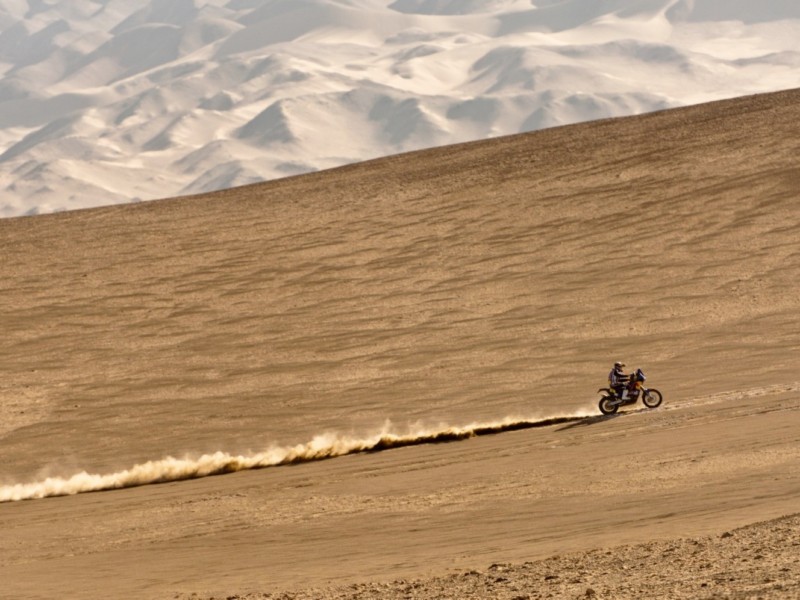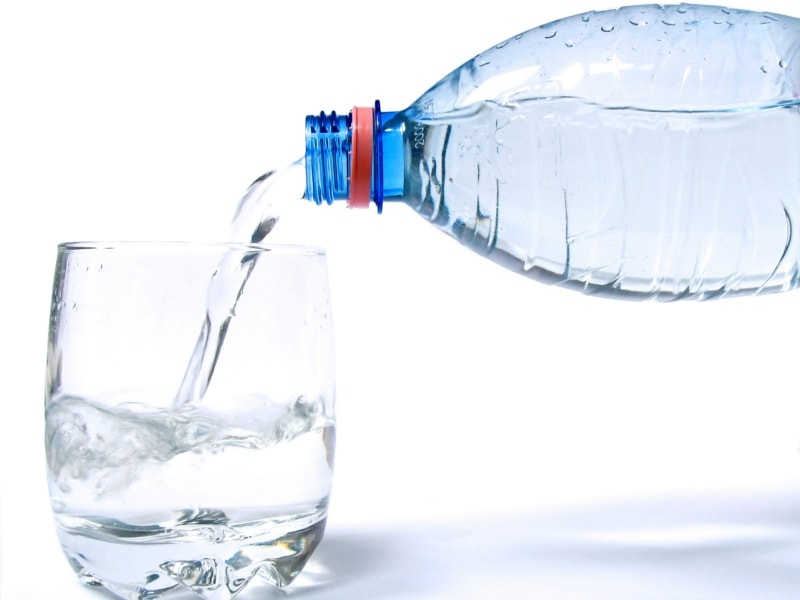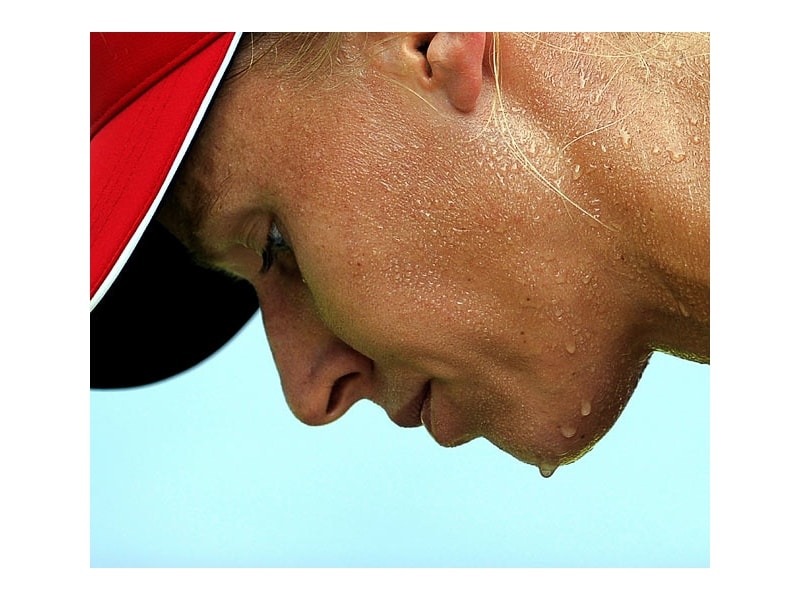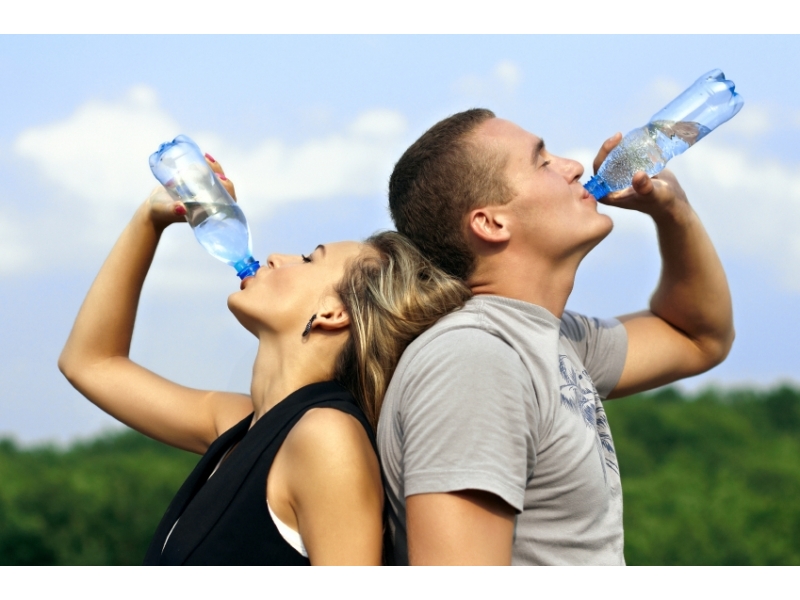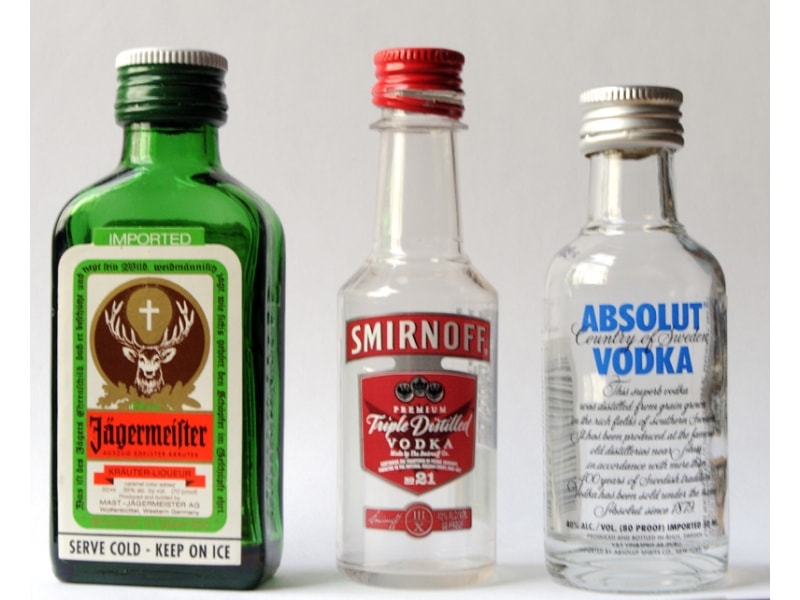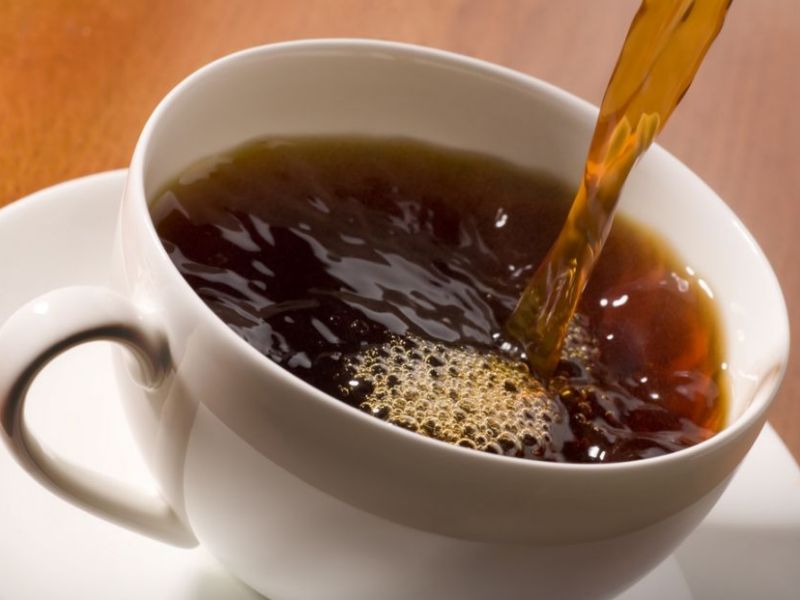They say a motorcyclist who rides much throughout the year is seldom dry, as he or she is either wet from rain or wet from sweating... and there is much truth in this. Those of you who are acquainted to long rides just know that the blessed state of "I'm 100% OK" is quite a rare thing.
Now, since most of the riders will be aboard their bikes during the warm season between May and September or so, they'll ever so often be riding in the blistering sun, and not knowing how to defend themselves against the unforgiving heat can easily take away the joy of riding... and even lead to serious trouble.
So when preparing for longer rides, you should consider several issues: check the weather forecast, consider how long your journey will be or how long you will be riding into the day, check your riding gear and remember about your potential health issues. Doing so increases the chances in your fight with the searing heat and maxes out the joy of riding.
When exposed to excessive heat, the human body attempts to balance and counteract the overheating process by sweating. Evaporating water cools down the area and this is the way in which our bodies fight against excessive heat.
Different individuals have varying responses to heat exposure, but there is one thing they all have in common: water and mineral loss. On the other hand, when exposed to excessively high temperatures over an extended period, some individuals might experience nausea, nose bleeding, increased heart rate, sensory delusions and many other nasty effects that are not to be desired, especially when riding a motorcycle.
Knowing the way your body reacts to heat exposure is the key element for taking the best precautionary actions and counter-balance the negative effects.
So one of the main things when it comes to preventing the effects of dehydration is trying to re-establish the natural mineral balance in your body. In simpler terms, only water will not do, or at least will not do 100%.
Personally, I have made numerous experiments during 600-miles (950 km) legs, and was surprised to find out that drinking mineral-loaded compounds intended for athletes helped dramatically.
Special beverages, such as Gatorade and the likes of that are more than soft drinks: in fact, they are not soft drinks, but help bringing back to normal the mineral levels in the body. That's why they're not fizzy, and that's why they're just a bit sweet: quick absorption is needed without excessively adding sugar to the bloodstream.
If you don't like these drinks, then you could check with your physician or drug store seller and ask them about dioralytes or Oral Rehydration Salts. Dioralyte solutions are pretty much the same thing but in a slightly different shape: they are powdered mineral compounds that can be dissolved in water, sometimes coming with certain fruit flavors.
When going for long rides, dioralyte bags are far more convenient as they take up a very small place in your luggage and can be mixed on the spot whenever needed. Needless to say, they are much cheaper than similar bottled drinks.
When riding in very hot weather, it's crucial to remember to rehydrate periodically. When the acute sensation of thirst is present, the dehydration is already happening. Depending on how much every individual sweats, drinking a small amount of water periodically is a very good way to prevent dehydration.
Personally, I found that drinking some 200ml of dioralyte solution each time I used to stop for refueling during a 13-hour summer ride kept me in perfect shape, with no sensation of thirst, dry mouth or anything like this. Basically, I drank a cup of dioralytes and then quenched the remainder of the thirst with water, and everything went just great.
There are countless medical studies on the negative effects of dehydration carried out throughout the world, and they all point in the same direction: people should try to avoid dehydration as much as possible, by drinking enough water, before the strong sensation of thirst is present.
Feeling a bit thirsty is the initial alarm that the body needs more water in order to keep functioning well. There is a very thin line between “alright” and “very bad” unfortunately: when it comes to dehydration, studies claim that a mere 2% drop in hydration levels is already causing short-term memory to become fuzzy, makes some basic math and mental associations seem like harder tasks and so on.
Mild to moderate levels of dehydration lead to fatigue, muscle weakness, decreased concentration, headaches, dizziness or lightheadedness and more. Now please review these effects and beware that every item mentioned is a serious hazard when associated with riding a bike.
Even more, dehydration makes blood be thicker than the usual, and this will cause the heart to work harder in order to pump the low-pressure fluid into your veins, causing unnecessary stress and decreasing the levels of oxygen reaching the cells.
This will also lead to rapid breathing, as the human body will attempt to supplement the oxygen intake. In more advanced situations, drowsiness may also ensue, increasing the risks of making a severe error hundredfold. Finally, if dehydration occurs, the body will regulate the amount of sweat, thus trying to preserve the water resources: less sweating equals less cooling, and there we go, a very dangerous snowball effect that can turn out extremely nasty results.
When riding in hot weather for long, both riders and passengers should remember to take short breaks for drinking at least water. However, if you don't like to stop every one hour and a half or so (I hate this with all the hate available), then you could have a water bottle at hand and drink as you ride. Or use a camel back hydration system, or pretty much any other method you seem to favor.
It really makes no difference which way you replenish your water resources while on the road, as long as you do it.
Finally, just before we end this first episode of “How to Beat the Heat,“ there is one more important thing about preventing dehydration: what you eat and drink just before starting off your journey on the road.
Certain types of food and beverages will require bigger amounts of water to be processed by the human body and they might have a negative impact on the water levels. As a short round-up of such food and drinks that reduce the hydration levels, we should mention the following:
On the drinks side, alcohol (whose use is illegal when riding anyway), coffee, black tea and similar beverages that contain caffeine will cause more frequent urination and need large amounts of water to be processed.
On the foods side, dishes with high-protein content need water for breaking down the proteins, while a diet based on high-fiber content tends to eliminate water by associating it with fiber excretion. However, the biggest water consumption is caused by the simple sugars, as they need very much water in order to be metabolized. Candy bars and similar sweets are draining more water from your body than you could imagine.
A balanced meal before the trip will help you stay in better shape (water-wise) and is a key element for “beating the heating,” if a very subtle and often overlooked one. Ride safe and be cool, see you soon with another episode.
What comes around goes around
Summer is a great time for long bike trips, especially because of the fair weather and the awesome grip on the hot asphalt, but a rider's plight is never done: the same beautiful season that makes minds wonder and hearts throb at the thought of chasing the horizon can easily become the enemy of the unsuspecting rider.So when preparing for longer rides, you should consider several issues: check the weather forecast, consider how long your journey will be or how long you will be riding into the day, check your riding gear and remember about your potential health issues. Doing so increases the chances in your fight with the searing heat and maxes out the joy of riding.
Know your enemies
There are two archenemies when it comes to riding in very hot weather: dehydration is the biggest evil of all and then there's the rest of physiological effects of sun/heat on the human body and mind.When exposed to excessive heat, the human body attempts to balance and counteract the overheating process by sweating. Evaporating water cools down the area and this is the way in which our bodies fight against excessive heat.
Different individuals have varying responses to heat exposure, but there is one thing they all have in common: water and mineral loss. On the other hand, when exposed to excessively high temperatures over an extended period, some individuals might experience nausea, nose bleeding, increased heart rate, sensory delusions and many other nasty effects that are not to be desired, especially when riding a motorcycle.
Knowing the way your body reacts to heat exposure is the key element for taking the best precautionary actions and counter-balance the negative effects.
Water and minerals are your best friends
When sweating, the human body eliminates a huge amount of essential minerals that are to be found in the bodily fluids. This is why you see white marks on the clothes you wore while sweating: they are a residue compound that contains all sorts of important minerals which help the human body work properly.So one of the main things when it comes to preventing the effects of dehydration is trying to re-establish the natural mineral balance in your body. In simpler terms, only water will not do, or at least will not do 100%.
Personally, I have made numerous experiments during 600-miles (950 km) legs, and was surprised to find out that drinking mineral-loaded compounds intended for athletes helped dramatically.
Special beverages, such as Gatorade and the likes of that are more than soft drinks: in fact, they are not soft drinks, but help bringing back to normal the mineral levels in the body. That's why they're not fizzy, and that's why they're just a bit sweet: quick absorption is needed without excessively adding sugar to the bloodstream.
If you don't like these drinks, then you could check with your physician or drug store seller and ask them about dioralytes or Oral Rehydration Salts. Dioralyte solutions are pretty much the same thing but in a slightly different shape: they are powdered mineral compounds that can be dissolved in water, sometimes coming with certain fruit flavors.
When going for long rides, dioralyte bags are far more convenient as they take up a very small place in your luggage and can be mixed on the spot whenever needed. Needless to say, they are much cheaper than similar bottled drinks.
When riding in very hot weather, it's crucial to remember to rehydrate periodically. When the acute sensation of thirst is present, the dehydration is already happening. Depending on how much every individual sweats, drinking a small amount of water periodically is a very good way to prevent dehydration.
Personally, I found that drinking some 200ml of dioralyte solution each time I used to stop for refueling during a 13-hour summer ride kept me in perfect shape, with no sensation of thirst, dry mouth or anything like this. Basically, I drank a cup of dioralytes and then quenched the remainder of the thirst with water, and everything went just great.
Why avoid dehydration?
There are many people out there who believe that dehydration equals thirst and once you had some water, things are back to normal. Dehydration is in fact many times more dangerous than the mere sensation of being thirsty.There are countless medical studies on the negative effects of dehydration carried out throughout the world, and they all point in the same direction: people should try to avoid dehydration as much as possible, by drinking enough water, before the strong sensation of thirst is present.
Feeling a bit thirsty is the initial alarm that the body needs more water in order to keep functioning well. There is a very thin line between “alright” and “very bad” unfortunately: when it comes to dehydration, studies claim that a mere 2% drop in hydration levels is already causing short-term memory to become fuzzy, makes some basic math and mental associations seem like harder tasks and so on.
Mild to moderate levels of dehydration lead to fatigue, muscle weakness, decreased concentration, headaches, dizziness or lightheadedness and more. Now please review these effects and beware that every item mentioned is a serious hazard when associated with riding a bike.
Even more, dehydration makes blood be thicker than the usual, and this will cause the heart to work harder in order to pump the low-pressure fluid into your veins, causing unnecessary stress and decreasing the levels of oxygen reaching the cells.
This will also lead to rapid breathing, as the human body will attempt to supplement the oxygen intake. In more advanced situations, drowsiness may also ensue, increasing the risks of making a severe error hundredfold. Finally, if dehydration occurs, the body will regulate the amount of sweat, thus trying to preserve the water resources: less sweating equals less cooling, and there we go, a very dangerous snowball effect that can turn out extremely nasty results.
When riding in hot weather for long, both riders and passengers should remember to take short breaks for drinking at least water. However, if you don't like to stop every one hour and a half or so (I hate this with all the hate available), then you could have a water bottle at hand and drink as you ride. Or use a camel back hydration system, or pretty much any other method you seem to favor.
It really makes no difference which way you replenish your water resources while on the road, as long as you do it.
Finally, just before we end this first episode of “How to Beat the Heat,“ there is one more important thing about preventing dehydration: what you eat and drink just before starting off your journey on the road.
Certain types of food and beverages will require bigger amounts of water to be processed by the human body and they might have a negative impact on the water levels. As a short round-up of such food and drinks that reduce the hydration levels, we should mention the following:
On the drinks side, alcohol (whose use is illegal when riding anyway), coffee, black tea and similar beverages that contain caffeine will cause more frequent urination and need large amounts of water to be processed.
On the foods side, dishes with high-protein content need water for breaking down the proteins, while a diet based on high-fiber content tends to eliminate water by associating it with fiber excretion. However, the biggest water consumption is caused by the simple sugars, as they need very much water in order to be metabolized. Candy bars and similar sweets are draining more water from your body than you could imagine.
A balanced meal before the trip will help you stay in better shape (water-wise) and is a key element for “beating the heating,” if a very subtle and often overlooked one. Ride safe and be cool, see you soon with another episode.

